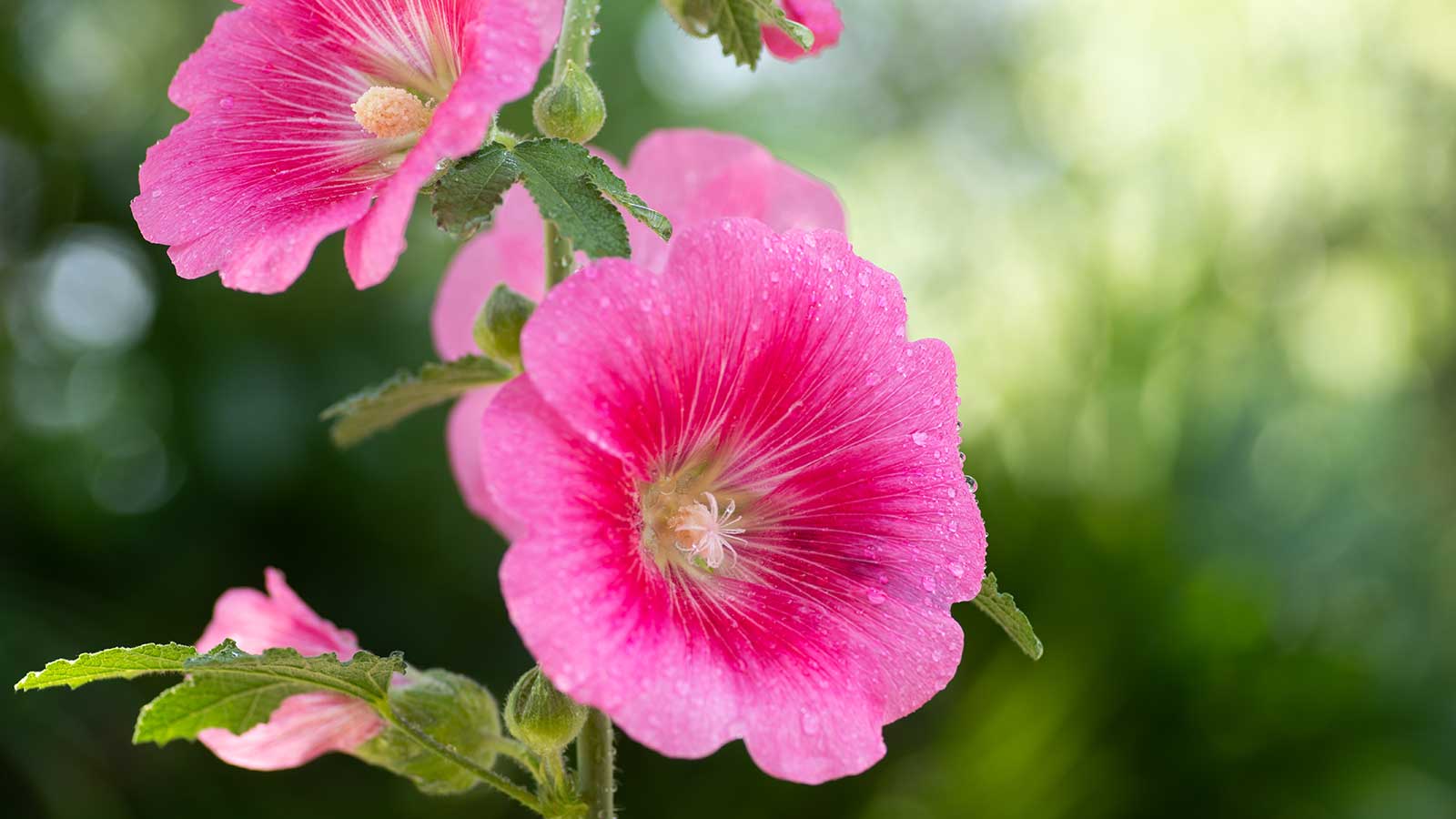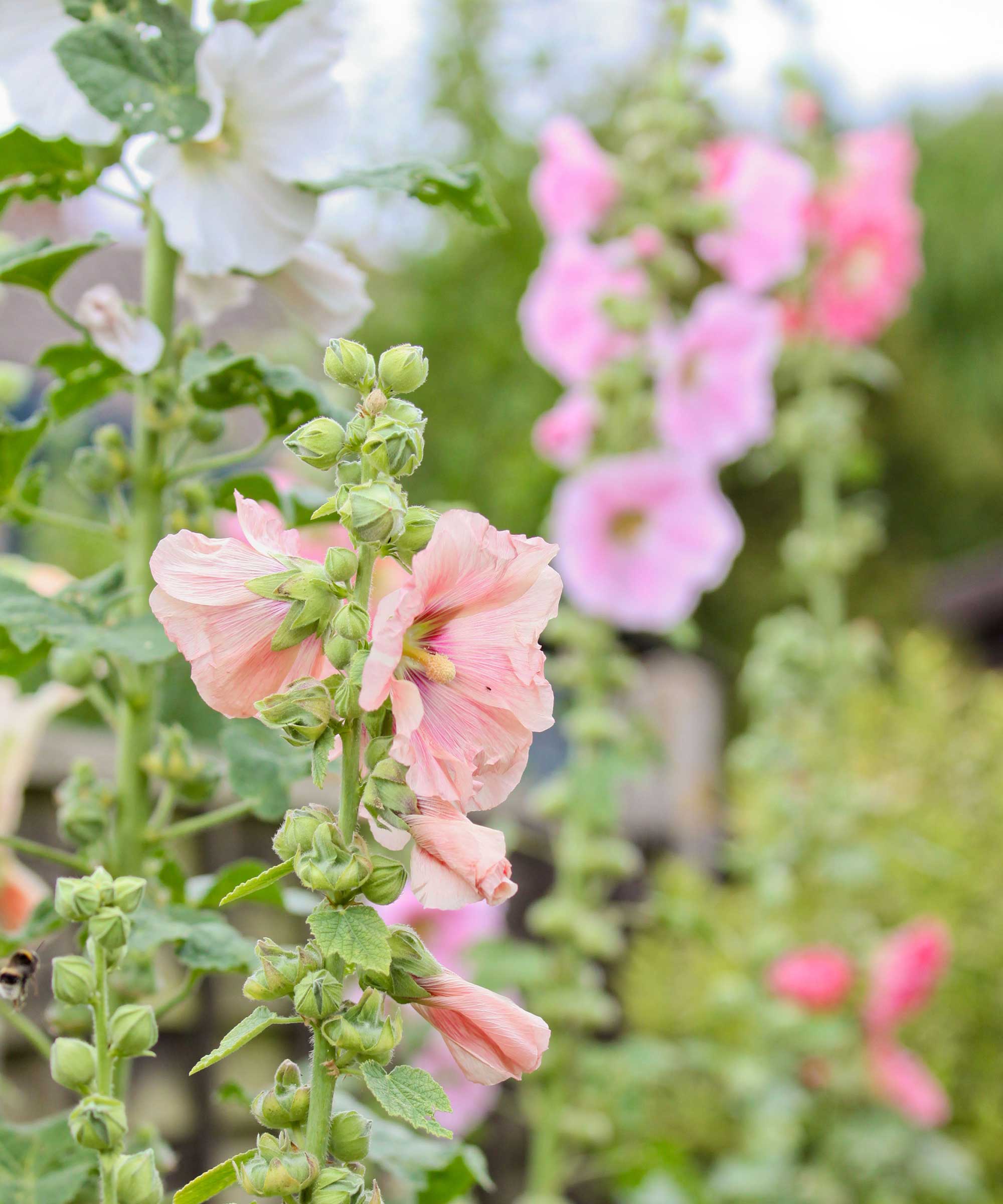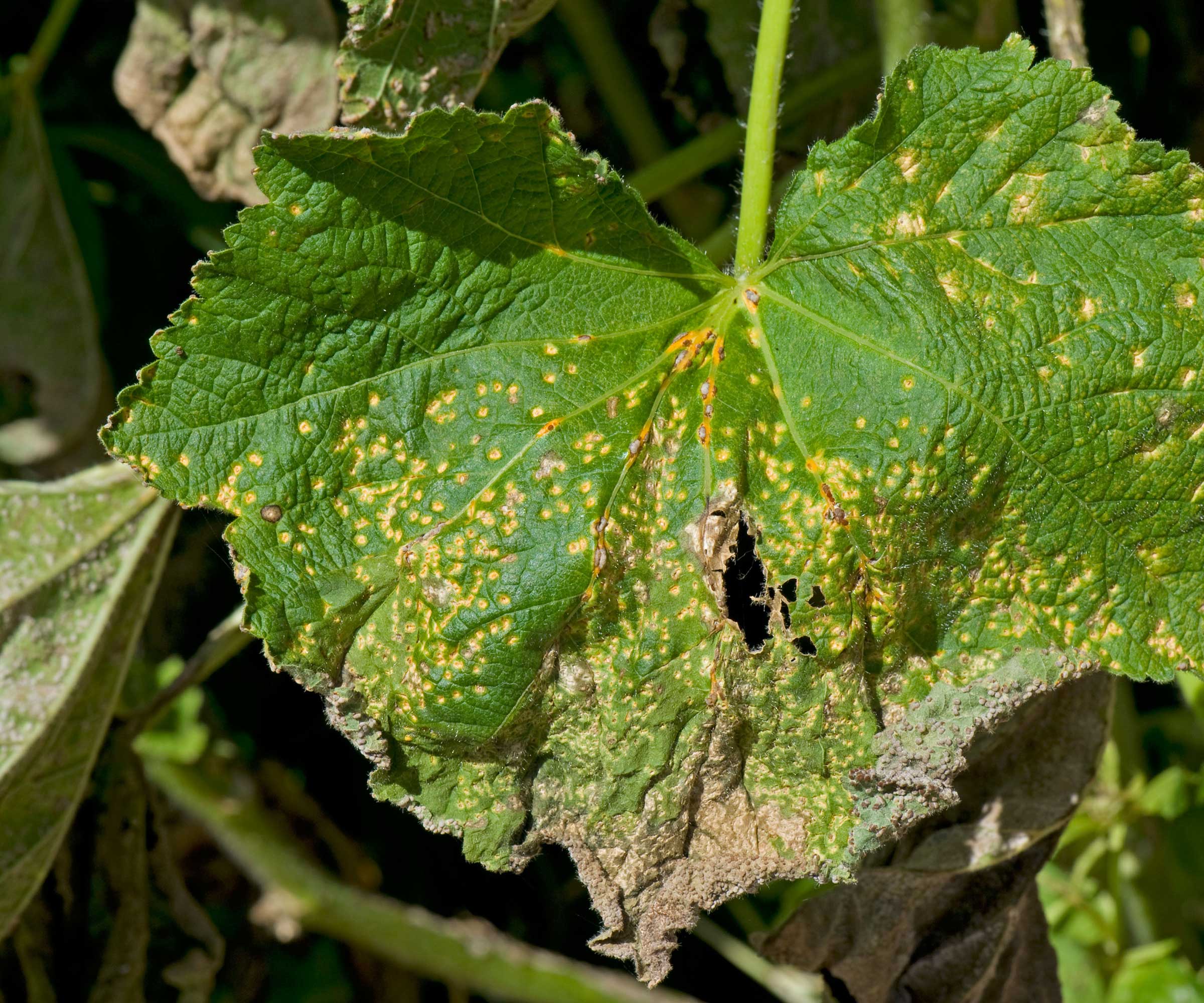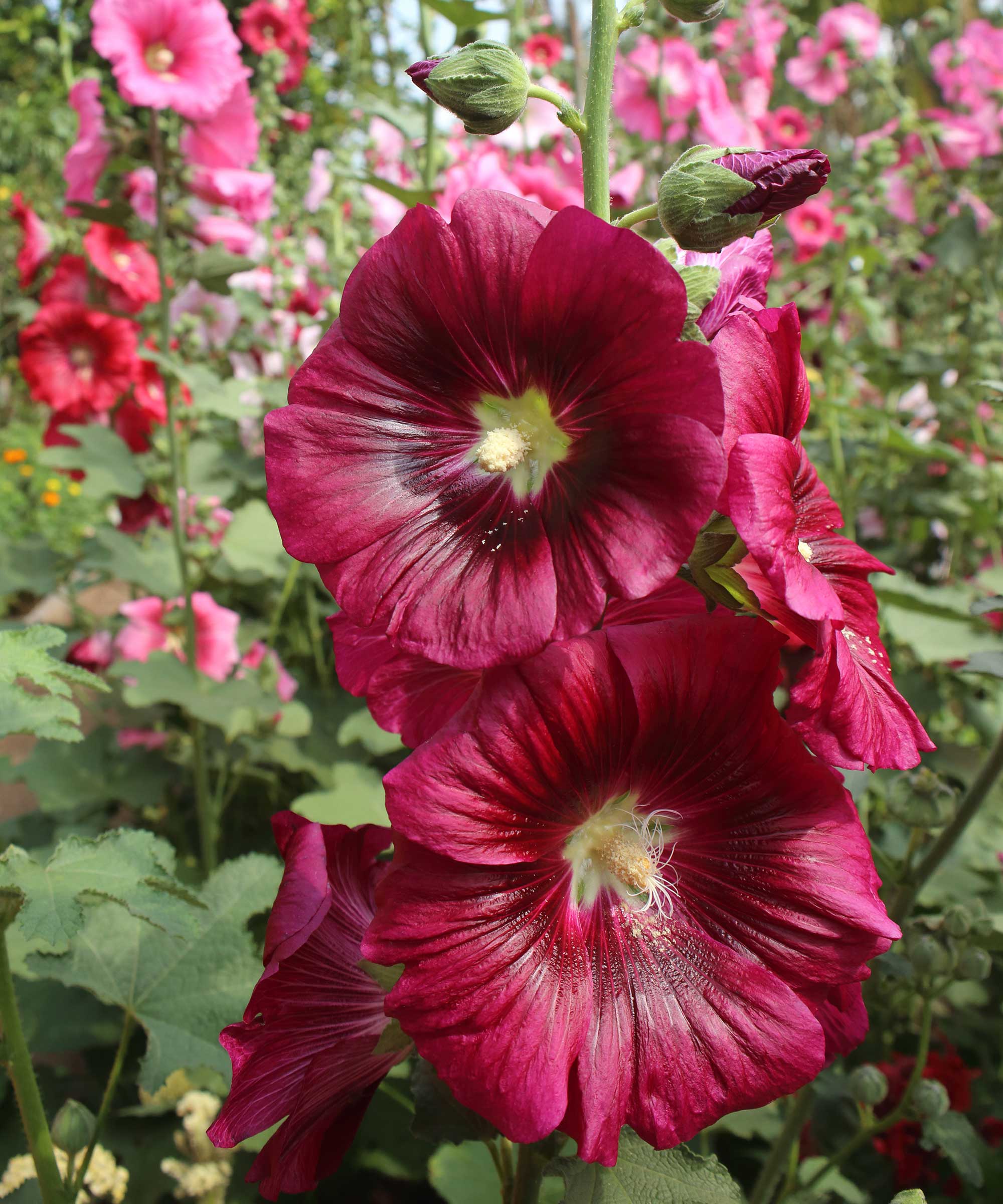Stop hollyhock rust from sabotaging your plants with these 3 expert-approved tips
Avoid this common plant disease and enjoy these cottage-garden favorites in all their glory


Q: I love hollyhocks for their colorful, crinkled flowers, and I have a row of them planted along the edge of my patio which I grew from seed. I was disappointed last year, however, as unsightly orange and yellow pustules developed on the tops of the leaves, with darker spots on the undersides. The leaves then dried up and fell off. What caused this, and how can I prevent it from happening again this year?
A: These are telltale symptoms of hollyhock rust, a common disease caused by the fungus Puccinia malvacearum. It can spread to other members of the mallow family, too, including hibiscus.
'It tends to start low and work up the plant, also contaminating stems,' says John Negus, a gardening expert. As you experienced, badly affected hollyhock plants lose their leaves and fail to thrive. But luckily, there are a few things you can do to reduce the risks.

John has been a garden journalist for over 50 years and regularly answers readers' questions in Amateur Gardening magazine. He has also written four books and has delivered many talks over the years on horticulture.

Hollyhocks are an elegant addition to flower beds and borders
3 tips for preventing hollyhock rust
Keep these pretty flowering plants in good health with this advice.
1. Dispose of them after they've bloomed
The fungus that causes hollyhock rust overwinters on infected leaves and plant debris ready to release more spores in spring, says Anne Swithinbank, a gardening expert.
Even if the plants don't show signs of rust in their first year of growth, they often will in their second, when they put on their floral display. So, many gardeners choose to dispose of all plant matter once they've finished flowering.
Fresh seeds can then be planted in a new spot – Burpee has a beautiful hollyhock variety, 'Chaters Pink', available to buy that will add vibrant color to a flower bed. 'Good moisture-retentive soil and space for air circulation give plants the best chance,' says Anne.
If you really want to keep your hollyhocks for another year after they've bloomed, cutting them right back to the soil in the fall can reduce the risks of the disease. Dispose of the cuttings rather than putting them on your compost heap, advises John.

Having trained at Kew Gardens in London and worked in parks department nurseries and as Glasshouse Supervisor at RHS Wisley, Anne has been a freelance horticulturist since 1986. Anne writes for Amateur Gardening magazine in the UK and has been a panelist on BBC Radio 4’s Gardeners’ Question Time for 27 years.

Rust develops as orange pustules on foliage
2. Inspect plants early and remove affected leaves
It's best to check hollyhocks frequently for any developing signs of rust as they grow, and quickly remove and destroy affected material. Be sure to clean your pruners afterward, to avoid spreading the disease.
If you're purchasing pot-bought plants from a garden center, ensure you check them for symptoms, too – just one infected plant can spread the disease to any other hollyhocks you may have.
3. Apply a fungicide
Spraying plants with a fungicide, such as BioAdvanced Disease Control for Roses, Flowers and Shrubs, available from Amazon, can keep the disease at bay.
'Treat plants before the rusty red spots have appeared and continue throughout the season,' John advises. These products can be effective against rose black spot, too.

Hollyhocks can be treated with fungicides to reduce the risks of rust
FAQs
Are there rust-resistant varieties of hollyhocks?
'The attractively bicolored Halo Series are described as rust-resistant and worth trying,' says Anne Swithinbank, a gardening expert. The 'Happy Lights Hollyhock Mix' is also said to be less likely to succumb to this disease.
How does hollyhock rust spread?
Spores erupt from pustules and spread via air currents, appearing as if from nowhere, even where hollyhocks have not been grown, explains Anne. However, wild mallows are another source, so removing mallow weed species can help to reduce the spread.
These cottage garden plants are well worth growing for their spires of satin-like blooms, so don't let the threat of rust put you off. For the easiest solution, simply replace them once they've finished their summertime show – it's inexpensive and easy to grow these flowers from seed.
Sign up to the Homes & Gardens newsletter
Design expertise in your inbox – from inspiring decorating ideas and beautiful celebrity homes to practical gardening advice and shopping round-ups.

Holly started writing about gardening five years ago, and she is a regular contributor to Homes & Gardens. She has also written many gardening features for Woman & Home and Real Homes, too. She has previous experience as a professional gardener, where she helped to plant and maintain private gardens. Holly has also looked after allotment plots over the years and loves to grow her own flowers and veggies from seed. In her spare time, she enjoys visiting local gardens, botanical drawing, and tending to her ever-growing collection of houseplants.
-
 Bryce Dallas Howard's bedroom is the most creative, social space in her entire home – she uses 'conversational seating' to create a multifunctional 'salon'
Bryce Dallas Howard's bedroom is the most creative, social space in her entire home – she uses 'conversational seating' to create a multifunctional 'salon'The actress's bedroom doubles as a home office thanks to its clever layout and furnishings, proving that this area is much more than a sleep space
By Hannah Ziegler
-
 7 questions to ask yourself before moving house – realtors promise answering these questions will prevent buyer's regret
7 questions to ask yourself before moving house – realtors promise answering these questions will prevent buyer's regretDon’t make your move harder, ask these questions before moving to avoid mistakes
By Chiana Dickson